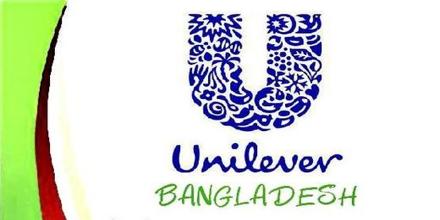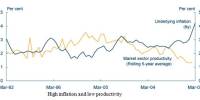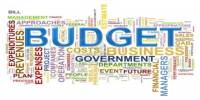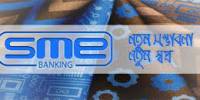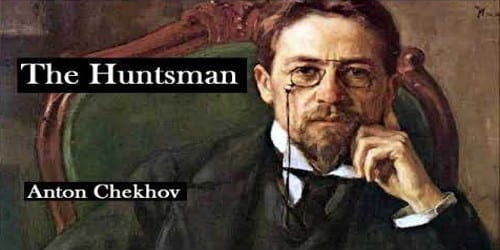Main purpose of this thesis is to analysis Optimizing Trade Investment through Channel Value Assessment in Unilever Bangladesh Limited. other objectives are to identify the channels to invest in based on growth opportunities and threats. This thesis also focus on to understand the concept of channels in UBL and classify the channels based on growth opportunities and threats. Finally draw SWOT analysis and give recommendations based on the results.
Objective of the project
Broad Objective
- To identify the channels to invest in based on growth opportunities and threats
Specific Objectives
The specific targets to be fulfilled were as follows:
- To understand the concept of channels in UBL
- To gain the understanding of channel identifying tools used by UBL
- To classify the channels based on growth opportunities and threats
- To give recommendations based on the results
Methodology
- Exploratory Research
The first part of the project was to understand the channel classification process as a whole and to get clear idea about different tools used by UBL. This was done by going through secondary information provided by the Customer Development department of UBL.
- Secondary Research
Then secondary research was carried out to find out the by channel by SKU turnover values. This was done through the internal database of the Customer Development department of UBL. Clarifications regarding the data were provided by Mr. Subrata Chakrobortty.
- Analysis
To analyze the data and to determine the channel to optimize investment, a software template has been used which has been developed by Unilever PLC for internal use.
Unilever PLC
Unilever is a public limited company of Anglo-Dutch origin that owns many of the world’s consumer product brands in foods, beverages, home care and personal care products. Unilever is one of the world’s largest consumer goods companies with a turnover of nearly €40 billion and more than 200,000 employees. Unilever produces 400 brands across a range of food, home and personal care products and operates in around 100 countries, and the products are sold in about 50 more.
Unilever describes themselves as a ‘multi-local’ multinational, bringing international expertise to the service of people everywhere. They have consumers, employees, business partners and shareholders on every continent.
Unilever is made up of two parent companies: Unilever NV that is based in Rotterdam, Netherlands, and Unilever PLC in London, UK. Both these companies have the same directors and are in effect a single business. The current non-executive Chairman is Antony Burgmans while Patrick Cescau is Group Chief Executive.
Unilever’s major competitors include Procter & Gamble, Nestlé, Mars Incorporated, and Reckitt Benckiser to name but a few.
History
The self-starter: William Hesketh Lever, the son of a shopkeeper, started selling ‘Sunlight’ soap to workers in the mills of Northern England in 1884 and founded Lever Brothers in 1885.
By 1911 Lever Brothers was producing a third of all UK’s soap. In 1917, he began to diversify into foods, ice cream, acquiring fish, and canned food businesses. Lever’s success was built by exercising power over his work force, heavy brand advertising and a supply of cheap raw materials. Lever bought out competing firms and by 1890 had set up soap factories in Australia, Canada, the US, Germany and Switzerland.
Merger mania: Margarine was first produced commercially in the Netherlands in the 1870s and by 1927 two early manufacturers, Jurgens and Van den Bergh, decided to merge their operations to form Margarine Unie. Attracted by the idea of having a prime market position in soap and margarine, Margarine Unie and Lever combined two years later. Furthermore, and more strategically important, both Lever Brothers and Margarine Unie were competing for the same raw materials, involved in large-scale marketing of household products and used similar distribution channels so a merger was a logical outcome and since 1930, the two companies have operated as one, linked by a series of agreements and shareholders that participate in the prosperity of the whole business.
The African conquest: In 1911 Lever obtained a right to use, within ten years, up to 750,000 hectares of palm-bearing land in Africa. He called his Congo base ‘Leverville’. Lever Brothers soon needed vast amounts of edible oil for their margarine manufacturing plants and also wanted to control their sources of supply so quickly took over the Niger Company and the African and Eastern Trade Corporation. These two ‘giants of Africa’ merged to form the United Africa Company (UAC) in 1929 and acted to forcibly keep prices paid to West African farmers down. These profits then helped UAC diversify into textiles, beer, engineering and more profitable trading activities.
Because of Fads, fancies and convenience: In 1922 Lever Brothers bought Macfisheries and the Wall’s meat company to extend their product range. In the summer when demand for Wall’s sausages was weak, the subsidiary began to make ice cream. With the end of WWII, the convenience foods market boomed and ice creams, frozen meals and oven-ready foods were developed. Now Unilever is developing other exotic products: out-of-season flowers and fruits. For example, Unilever grows carnations in Kenya that are airfreighted to markets in Europe, supplying customers all year round.
Nimble-fingers make fortunes: Unilever grows tea in Africa and is a major buyer at all tea auctions and is also the market leader in most consuming countries. Unilever has 95 per cent of packet tea sales in India and Pakistan. It is able to buy cheaply in the Third World where costs are low and has invested heavily in processing to make things such as ‘instant tea’ that add value when retailed.
Today…: Hidden from public eyes Unilever is developing global uniformity amongst its products. Factories are being shut in Europe as production is centralized into fewer, bigger units. It is also spending increasing amounts of its annual budget on advertising in order to make its goods seem different from each other. The advertisements are designed to capture new types of buyers.
Some Facts about Unilever
- Worldwide turnover in 2006 was €39.6 billion
- Employed 247,000 people, with 90% of managers locally recruited and trained.
- Its Home and Personal Care and Foods products are sold in 150 countries.
- Almost 72% of Unilever’s sales are generated by its foods division brands.
- In many parts of the world Unilever leads the home care market with brands such as Brilhante, Comfort, Skip and Omo.
- Unilever’s top personal care brands include Lux, Ponds, Sunsilk, Rexona, Axe, and Dove
- Its other famous brands include Dove, Knorr, Lipton, Hellmann’s, Magnum, Omo and Cif.
- It spends about £3.5 billion a year on marketing its brands.
- Every day 150 million people choose Unilever brands to feed their families and to clean their homes.
- In 2006 Unilever spent over €1 billion on research and development – about 2.5% of its turnover.
- Unilever has 111 sites certified to the international environmental management standard ISO 14001.
Unilever Bangladesh Limited (UBL)
The year 1964 marked a new beginning for Kalurghat in Chittagong. It was in this year that Unilever Pakistan Ltd a subsidiary of Unilever, the Anglo Dutch Consumer goods Company, decided to establish a manufacturing unit in Kalurghat. Unilever started its quest to contribute to enhance the quality of human life, not confining its mission to produce quality branded products, but also providing opportunities of employment, developing ancillary industries, protecting the environment, and propagating community development through social contributions.
In 1964, Unilever started producing mechanized soaps, thus ushering industrialization in the area. Productions started off with Sunlight soap and Lifebuoy soap. Back in those days the average weekly capacity was 50 to 60 tons. After meeting the local demands, surplus was shipped to Pakistan. However, the political scenario was deteriorating and after a ravaging war in 1971, Bangladesh became an independent country. It was after independence that Unilever Bangladesh Ltd was constituted with Unilever owning 60.75% shares and the Government of Bangladesh owning the remaining 39.25% shares.
Post liberation period evidenced accelerated growth for the company. Demand started rising and the company continued its mission to meet consumer needs by producing quality soaps, introducing Lux – the beauty soap and Wheel. Launched in 1972 Wheel entered the mechanised laundry category, traditionally dominated by cottage soaps. It appealed to the consumers with unique care benefits for hand and fabric, a generic weakness in cottage soaps. It gradually became the secret ally of Bangladeshi women by extending the caring hand to ease her daily laundry chores.
The early eighties witnessed expansion of Unilever Bangladesh Ltd through diversification! Calibrating direction, the mission now included enhancing quality of life through other personal products aspiring aestheticism like sparkling white teeth, fresh breath, beautiful hair, and glowing skin. A Personal Product Plant was established to manufacture shampoo, toothpaste, and skin care creams.
In the early 90’s Unilever entered the tea-based beverage market introducing Lipton Taaza, Lever’s flagship packet tea brand, with the objective to be the most preferred tea of the Bangladeshi consumers.
The appetite to innovate and grow was insatiable. New products such as fabric washing powders were manufactured for the first time with formulations technically suitable for conditions in Bangladesh at an affordable price. Such washing powders led the country to witnessing a revolutionary change in washing habits moving from direct application to significantly convenient solution wash.
Product formulations were of international standard and by tapping into the vast know-how base of the parent Company – Unilever, Unilever was able to make the products available to the consumers at an affordable price. The growth of the company provided ample employment opportunities both direct and secondary with attendant fillip to the economy of the country.
Focused on meeting and responding to the needs of our consumers in Bangladesh, the journey to grow and the quest for excellence continue unabated!
Brief History of Brand Launches by Year:
| Brands | Year of Launching |
| Lifebuoy | 1964 |
| Lux | 1964 |
| Wheel Laundry Soap | 1972 |
| Sunsilk | 1982 |
| Close Up | 1987 |
| Vim | 1987 |
| All Clear | 1989 |
| Fair & Lovely | 1988 |
| Ponds’ | 1991 |
| Pepsodent | 1991 |
| Taaza | 1992 |
| Surf Excel | 1993 |
| Wheel Washing Powder | 1997 |
| Rexona | 2002 |
| Vim Bar | 2003 |
| Pepsodent Tooth Powder | 2003 |
| Lakme | 2006 |
Table: Brief History of Brand Launches by Year
Unilever Bangladesh Limited Corporate Purpose
Unilever’s purpose is to meet the everyday needs of people everywhere. To anticipate the aspirations of their consumers and customers and to respond creatively and competitively with branded products and services which raise the quality of life.
Their deep roots in local cultures and markets around the world are their unparalleled inheritance and the foundation of their future growth. They bring their wealth of knowledge and international expertise to the service of local customers – a truly multi-local multinational.
Their long-term success requires a total commitment to exceptional standards of performance and productivity, to working together effectively and to a willingness to embrace new ideas and learn continuously.
They believe that to succeed requires the highest standards of corporate behavior towards their employees, consumers and the societies and world in which we live.
This is Unilever’s road to sustainable, profitable, growth for their business and long-term value creation for their shareholders and employees.
Unilever Bangladesh Limited Mission
Unilever’s mission all over the world is to add vitality to life. UBL follows this and tries to meet everyday needs for nutrition, hygiene and personal care with brands that help people look good, feel good and get more out of life.
Unilever Bangladesh Limited Goals
- To manufacture high-standard products.
- Promoting products to the highest extent
- Producing large volume to achieve production cost economies.
Code of Business Principles
The following Unilever’s business principals are also applicable for Unilever Bangladesh Limited.
Standard Of Conduct
They conduct their operations with honesty, integrity and openness, and with respect for the human rights and interests for their employees. They will similarly respect the legitimate interests of those with whom they have relationships.
Obeying The Law
Unilever companies and their employees are required to comply with the laws and regulations of the countries in which they operate.
Employees
Unilever is committed to diversity in a working environment where there is mutual trust and respect and where everyone feels responsible for the performance and reputation of their company. They will recruit, employ and promote employees on the sole basis of the qualifications and abilities needed for the work to be performed. They are committed to safe and healthy working conditions for all employees. They will not use any form of forced, compulsory or child labor. They are committed to working with employees to develop and enhance each individual’s skills and capabilities. They respect the dignity of the individual and the right of employees to freedom of association. They maintain good communications with employees through company based information and consultation procedures.
Consumers
Unilever is committed to providing branded products and services which consistently offer value in terms of price and quality, and which are safe for their intended use. Products and services are accurately and properly labeled, advertised, and communicated.
Shareholders
Unilever conducts its operations in accordance with internationally accepted principles of good corporate governance. They provide timely, regular and reliable information on our activities, structure, financial situation and performance to all shareholders.
Business Partners
Unilever is committed to establishing mutually beneficial relations with our suppliers, customers and business partners. In their business dealings they expect their business partners to adhere to business principles consistent with their own.
Community Involvement
Unilever strives to be a trusted corporate citizen and, as an integral part of society, to fulfill our responsibilities to the societies and communities in which they operate.
Public Activities
Unilever companies are encouraged to promote and defend their legitimate business interests. They co-operate with governments and other organizations, both directly and through bodies such as trade associations, in the development of proposed legislation and other regulations, which may affect legitimate business interests. They neither support political parties nor contribute to the funds of groups whose activities are calculated to promote party interests.
The Environment
Unilever is committed to making continuous improvements in the management of their environmental impact and to the longer-term goal of developing a sustainable business. They work in partnership with others to promote environmental care, increase understanding of environmental issues and disseminate good practice.
Innovation
In their scientific innovation to meet consumer needs they respect the concerns of their consumers and society. They work on the basis of sound science applying rigorous standards of product safety.
Competition
Unilever believes in vigorous yet fair competition and supports the development of appropriate competition laws. They conduct their operations in accordance with the principals of fair competition and all applicable regulations.
Business Integrity
Unilever does not give or receive whether directly or indirectly bribes or other improper advantages for business or financial gain. No employee may offer give or receive any gift or payment, which is, or maybe construed as being, a bribe. Any demand for, or offer of, a bribe must be rejected immediately and reported to management. Their accounting records and supporting documents must accurately describe and reflect the nature of the underlying transactions. No undisclosed or unrecorded account, fund or asset will be established or maintained.
Conflicts Of Interests
All Unilever employees are expected to avoid personal activities and financial interests, which could conflict with their responsibilities to the company. They must not seek gain for themselves or others through misuse of their positions.
Markets Served by Unilever Bangladesh Limited
Unilever Bangladesh Limited serves all kinds of markets. Its product mix actually caters for almost all types of markets. Following is a detail of the types of markets served.
Broadly speaking, the distribution network of Unilever Bangladesh Limited is vast and reaches all sorts of markets on at least twice a week basis. They serve markets in:
- Urban areas.
- Sub-urban areas (small towns).
- Rural markets.
Out of the total number of retailers in Bangladesh (the total number has been provided by AcNielsen Bangladesh Limited by a census conducted last year) Unilever Bangladesh Limited reaches more than one third of them directly at least twice a week. The other half that is not covered directly are predominantly, small tea shops, small retailers in the deep rural areas like Chittagong hill tracks and unrelated retail outlets like clothes stores etc. So it is evident that there is not much scope for Unilever Bangladesh Limited to expand its direct coverage as almost all related and economically viable outlets are already covered.
The types of outlets that are covered directly are:
- Grocer stores.
- Wholesalers.
- General stores.
- Tea stalls.
- Cosmetic stores.
- Self Service Stores
The few retailers who sell Unilever Bangladesh Limited products but are not served directly are served by the wholesalers which make this channel very important. The company also gives considerable importance to the wholesalers and from time to time special trade promotional activities are done specifically for the wholesalers. One suck kind of activity is known as “Dosti Program”. However, the detail of Dosti program is outside the scope of this report and hence is not elaborated further. This is basically a summary of the markets served by Unilever Bangladesh Limited.
Distribution Network
Distribution of Unilever Bangladesh Limited products is done by the Customer Development Department. It is a huge network with thousands of field workers working six days a week. It is through their relentless effort that the goods reach the end consumers. The basic structure of distribution is as follows:
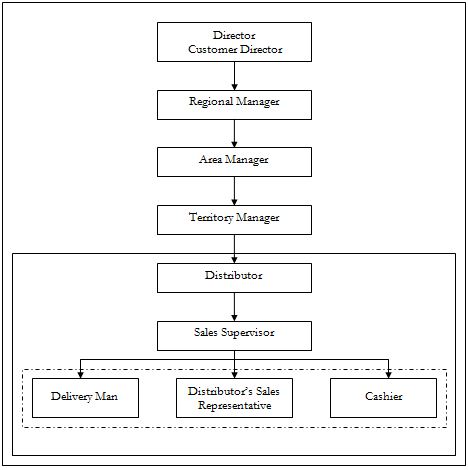
The Customer Development Director is the head of the sales or Customer Development team. Apart from others, the regional managers report directly to him. The whole of Bangladesh has been divided into five regions based on geography and sales volume. The regions are:
- Central Metro Region (Dhaka Metro City)
- Central Outer Region (rest of Dhaka Division)
- Eastern Region (Chittagong and Sylhet division)
- Northern Region (Rajshahi Division)
- Southern Region (Khulna and Barisal Division)
Each or these regions have two or more areas headed by the area manager who reports to the regional manager. Each area has three or more territories that are headed by the territory manager who reports to the area manager. The territory manager has his office in the distribution house of the area (in case of multiple distribution house in one territory he usually sits in a central location) and mans an army of sales supervisors, distributor’s sales representatives, cashiers and deliverymen.
The Territory Manager is an employee of Unilever Bangladesh Limited but below him the distributor and others are simply distributor’s employees. When a company becomes distributor of a certain territory, it has to sign a contract where it says that the distributor will have to employ certain number of people in each trade (i.e. cashier, supervisor etc.) and the territory manager of that particular territory will advise the number of people in each trade. The day-to-day work plan of these people will also be set by the territory manager although they will be supervised by the sales supervisor who will report to the distributor and Territory manager.
This contract also says that there will be a room in the distribution house to be used by Unilever Bangladesh Limited employees, primarily by the Territory Manager. In every distribution house there is an issue of dual authority. The problem is the distributor’s sales representatives, cashiers and deliverymen reports to both the distributor and territory manager that can potentially create problems. However, Unilever Bangladesh Limited do not consider their distributors as just a company or person working for them rather they consider the distributors as partners in business where both have the same goal; achieving greater sales volume. By doing this, now there are no issues regarding dual authority and all the territories are running smoothly.
It may be mentioned here that, the distributor’s sales representative (DSR), cashier and deliveryman is one group. The DSR takes the orders from the markets, the cashiers collect the payment as per order and based on orders and payment, the deliveryman delivers the goods to the intended retailers.
This distribution network is very vast and can reach literally any corner of the country any day of the week.
Customer Development – The Function
The Customer Development team, previously called Customer Management, is responsible for the overall sales and distribution of UBL’s brands across the country. They are the bridge between the Brand Management team and the Consumers. The Customer Development team makes sure that the company meets the everyday needs of people everywhere through ensuring that their brands are always within the reach of their customers and consumers. To do so, pioneering new channels of distribution, ensuring visibility of brands through attractive merchandising, and developing distributors to enhance UBL’s penetration and coverage are crucial responsibilities entrusted upon the Customer Development team.
Increasing competition and the advent of modern trade has compelled customer development to shift from “Traditional Sales” to “Trade Marketing”. With more trade sophistication, the role of Customer Development is evolving into Relationship Marketing where Channel Development, Merchandising, and Distributor Development play a crucial part in keeping the company ahead of competition and in outpacing market change.
In fact, ever since 2006, one difference that has come across the organization is that the CD function has been identified as an important source of growth through the following ways:
- One aligned agenda across the region of “Win with Customers”
- A focused effort on growing share in growing channels and customers through Channel Value Assessment (CVA)
- Going to market as ‘One Unilever’ under Unilever’s new market operating model
- Breaking down functional barriers – specifically with marketing and supply chain by customer marketing and sales and operations activities
- Not accepting mediocrity in stores by means of POP measurement & 3600 marketing
Hence, to be a winning part of the Customer Development team one needs to have:
- Great passion to achieve targets
- Very strong people management skills, good analytical ability
- Strong customer orientation and the ability to develop action plans that can meet both the needs of our customers and the business
- Real enthusiasm and the pace for competitiveness at retail
- Practical creativity that focuses on results
- Real drive to lead a team
- Willingness to work anywhere in Bangladesh
Channels
What is a channel?
A channel is defined as a common group of point of purchase that satisfy the same consumer/shopper needs or characteristics.
Channels of UBL
Background
In 2002, the HPC Asia Executives concluded that the only way to growth was to adopt a differentiated approach with customers in different channels. Channel stragey dimension was the direct outcome of this strategic decision.
“Channels” and “shopper understanding” was not new to Unilever. Elements of shopper based channel development have existed in one form or another for many years. However, the progrmame endorsed and initiated by the HPC Asia Business Group was the first integrated change management programme with the potential to change the way Unilever goes to market.
Need for channels
In an ideal world, the greatest way would be to manage each outlet individually. However, in reality that would not be cost effective. On the other hand, treating them all the same way would not various brands to reach full potential. It will make UBL vulnerable to its competitors. So, channels were created to analyze and manage the outlets in groups.
Channel Value Assessment (CVA)
In 2006, Unilever PLC decided to invest in all channels in similar and wanted to optimize investment within channels by identifying the channels with high opportunity of growth and lower threats. Thus the concept of Channel Value Assessment came.
Channel value assessment (CVA) means the assessment of the identified channels in terms of opportunity and challenges. Then, categorize the channels in three different groups: Gold, Silver and Bronze and then invest in the channels according to the priority of the category.
Stage A: Identify the customers/ channels
In this stage, firstly the channels are listed down and then the information regarding sales, of the current year and the previous year, all the channels is collected. After all the information is collected, the channels are ranked based on their growth of sales and the top 9 are selected. For UBL, since there are only six different channels, all the channels are kept in the final list.
Stage B: Define attributes
In this stage the attributes are defined for assessing each of the channels in each of the dimensions of Healthy Opportunity and Degree of Challenge. Since this template for channel assessment has been developed abroad, the attributes were already defined and were marked as either required or optional. While putting weightings on the attributes, all the required attributes had to be selected and the optional attributes had been selected based on the relevance on our market conditions. While defining weightings, the following guidelines were followed:
- A “zero” weight means that an attribute has not been selected
- No single Required attribute (for example Growth) could have a weighting of less than 10% or more than over 25%.
- Required attributes (R) must have a total weighting of at least 67%.
- Optional attributes (O) must have a total weighting of no more than 33%.
- The sum of the attributes weightings per dimension (Healthy Opportunity and Degree of Challenge) had to reach 100%.
Stage C: Rub the assessment
Then the data for the specific channels regarding the attributes are collected and the assessment is done. For the quantitave attributes actual values are used such the sales figures and growth figures, but the qualitative attributes are valued with appropriate given options. The options are: Yes/No, Strong/Avearge/Weak or Very High/High/Medium/Low/Very Low. Again, the value for the qualitative attributes were based on the jundgement of the Trade Marketing Manager and the Management Accountant- Business Partner, Customer Development.
Stage D: Group Strategically
Based on the results on the assessment, when the channels are classified as Gold, Silver or Bronze, the channels of the same color can be grouped, if the characteristics are similar, and business plan can be made accordingly or the channels can be dealt individually. But dealing in groups makes it more cost effective.
Stage E: Apply to Business
Then the plan can be applied to business and regular monitoring has to be done so that the plan is in place.
Channel Value Assessment (CVA)- Central Outer Region
The central outer region consists of the towns at the outskirts of the Dhaka metropolitan city. It consists of the following towns:
- Baluka
- Joydevpur
- Manikganj
- Savar
- Mymensingh
- Netrokona
- Sherpur
- Jamalpur
- Tangail
- Karaniganj
- Nowabganj
- Sreenagar
- Adamjee
- Munshiganj
- Narayanganj
- Narshindi
- Sonargaon
During the CVA, the bases for sales figures were as:
Current: February 2006 – January 2007
Previous: February 2005 – January 2006
and the following towns were left out from calculation as the base of previous year was not proper as the towns did not have direct coverage and were serviced by some other town:
- Baluka
- Netrokona
- Nowabganj
- Sreenagar
- Manikganj
- Sonargaon
After the bases and the towns were fixed, the turnover figures of each brand and each SKU of UBL in each of the channels for each of the 12 months were gathered from the internal database, and then accumulated. This was done to find the profitability of each of the channels and to find the growth. Profitability is required as the relative profitability of the channel to the overall profitability of UBL, is one of the quantitative attributes. Also, the contribution of each channel to the overall turnover and profitability is an attribute for assessment
Stage A: Identify channels/customers
The channels were identified and the turnover figures were put in. From the initial table, the short listed table is made. As UBL has only six retail channels identified, all the channels were short listed.
| Your Customers / Channels | Turnover | % | Rank | ||
| list : | Feb2005-Jan2006 | Feb2006-Jan2007 | Chg | Previous | Current |
| General Store | 35,367,191 | 43,071,875 | 21.8% | 3 | 3 |
| Neighborhood Grocer | 238,551,328 | 328,486,971 | 37.7% | 1 | 1 |
| Wet Market Grocer | 154,720,115 | 195,579,315 | 26.4% | 2 | 2 |
| Tong | 9,597,931 | 11,614,082 | 21.0% | 5 | 5 |
| Shoping Complex | 27,035,816 | 33,981,859 | 25.7% | 4 | 4 |
| Self Service Store | 95,627 | 166,588 | 5021.1% | 6 | 6 |
Table: Turnover by Channel
The percentage change and the rankings are automatically generated. Then in the second table the channels are short listed.
| Your 7 to 25 Customers / Channels | Turnover | % | |
| # | selected to be assessed : | Feb2006-Jan2007 | Chg |
| 1 | General Store | 43,071,875 | 21.8% |
| 2 | Neighborhood Grocer | 328,486,971 | 37.7% |
| 3 | Wet Market Grocer | 195,579,315 | 26.4% |
| 4 | Tong | 11,614,082 | 21.0% |
| 5 | Shoping Complex | 33,981,859 | 25.7% |
| 6 | Self Service Store | 166,588 | 5021.1% |
Table: Short listed Channels
Stage B: Define attributes
The attributes were defined and then the weighting were assigned as given in the following table:
| Required / Optional | Attributes: | Weight | Attributes Components: | ||
| HEALTHY OPPORTUNITY | |||||
| Total : | 100% | ||||
| R | Size | 23% | Size of Overall Customer/Channel as measured by $/€ Sales | ||
| 18% | Size Overall | ||||
| 5% | Size Foods / HPC / Other | ||||
| R | Growth | 21% | Historical Growth Rate of Customer/Channel (3 Yr CAGR) | ||
| 7% | Overall Customer/Channel % Sales Growth | ||||
| 7% | Foods / HPC / Other Customer/Channel Growth | ||||
| 7% | Unilever relative Turnover Growth at Account | ||||
| R | Sources of Future Growth | 20% | Ability of Customer/Channel to drive future growth | ||
| 7% | Future Growth from Market Share Increase | ||||
| 10% | Future Growth from Distribution Increase | ||||
| 3% | Financial Strength | ||||
| 0% | # of Store Openings | ||||
| R | Relative Profitability | 20% | Profitability of Customer/Channel relative to others | ||
| 20% | Customer/Channel Relative Contribution | ||||
| R | Alignment ???? | 5% | Alignment of Customer/Channel with Strategic Initiatives | ||
| 0% | Central Buying / Execution Power | ||||
| 0% | Compliance with Efficient Operations Programs | ||||
| 0% | Willingness to share data (forecast/consumer) | ||||
| 5% | Other Strategic Initiative Alignment | ||||
| O | Marketing Sophistication | 11% | How Effectively Channel/Customers Markets to Consumers | ||
| 5% | Capability to grow Unilever categories | ||||
| 0% | Use of Shopper Data / Consumer Strategies | ||||
| 6% | Speed / Readiness to Introduce New Products | ||||
| O | Industry / Technology Leadership | 0% | Is this customer / channel a leader in the industry? | ||
| 0% | Supply Chain Leadership | ||||
| 0% | Supply Chain Efficiency | ||||
| 0% | Technology Leadership | ||||
| DEGREE OF CHALLENGE | |||||
| Total : | 100% | ||||
| R | Dependency | 30% | Dependency on Customer/Channel | ||
| 15% | Unilever Foods / HPC Dependency on Customer (% of Sales) | ||||
| 15% | Brand/Category Dependency on Customer | ||||
| R | Reliance on Trade Investment | 25% | Customer/Channel Performance against Trade Terms | ||
| 12% | Relative %age of Trade TTS | ||||
| 13% | Relative %age of Consumer TTS | ||||
| 0% | New Item Entry Cost | ||||
| R | Management Style | 15% | Customer Commitment to building business through consumer value creation | ||
| 5% | Negotiation Focus (vs Consumer Value Focus) | ||||
| 10% | Level of Partnership with Unilever Food/HPC Competitors | ||||
| R | Commitment to Retail Private Label (RPL) | 0% | How dedicated is Channel/Customer to RPL? | ||
| 0% | Commitment to RPL in Food/HPC Categories | ||||
| 0% | Commitment to RPL in All Categories | ||||
| O | Spread | 20% | # of outlets Customer/Channel Existence | ||
| O | Relative cost to serve/outlet | 10% | Relative cost to serve/outlet | ||
| O | Trade Terms | 0% | Capability to Exploit Trade Terms/Price Differences in Region | ||
| O | New Market Entry | 0% | Potential to pose threat to local trade environment | ||
| O | Organizational Stability | 0% | How stable is this Customer/Channel? | ||
| 0% | Anticipated Level of Future Change | ||||
| 0% | Financial Independence |
Recommendation
I feel, considering the growth of only one year might be misleading and I feel that the period of comparison should be expanded to at least 3 to 5 years. This will ensure sustainable growth. Also, the attribute of number of stores opening was not given any weighting. This attribute can be very helpful in determining the growth of the channel.
Conclusion
The Channel Value Assessment is one of a kind initiative to optimize trade investment in terms of the value generated and the contribution of the channel to the overall turnover. By doing so, this will not only help the company, but also the retailer in terms of greater profitability and growth.
